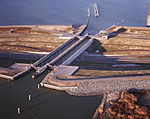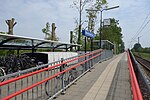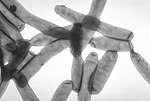Evangelical Lutheran Church (Enkhuizen)

The Evangelical Lutheran Church on the Breedstraat 40, Enkhuizen, is a former church of the Evangelical Lutheran Church in the Kingdom of the Netherlands. The congregation was founded in 1623 by the family of a Danish Lutheran merchant, Frederik Dirxen van Tatinghof, who had come to Enkhuizen for the trade in oxen, and was severely suppressed until 1641, when the congregation was allowed to gather in a building acquired by one of Tatinghof's sons. When the congregation shrank in the 1800s, it acquired the building at the Breedstraat and dedicated it in 1843. In 2017 it moved to another building in the city. The church on Breedstraat 40, the parsonage on no. 42, and the sacristy on no. 44 are Rijksmonuments.
Excerpt from the Wikipedia article Evangelical Lutheran Church (Enkhuizen) (License: CC BY-SA 3.0, Authors, Images).Evangelical Lutheran Church (Enkhuizen)
Breedstraat,
Geographical coordinates (GPS) Address Nearby Places Show on map
Geographical coordinates (GPS)
| Latitude | Longitude |
|---|---|
| N 52.704444444444 ° | E 5.2944444444444 ° |
Address
Breedstraat 40
1601 KD
North Holland, Netherlands
Open on Google Maps









